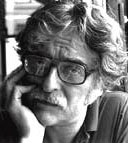 |
→ September 2007 Contents → Column
|
Nuts & Bolts
September 2007
|
 |
The constant quest, the impossible dream – the little bag that in spite of its small size holds a huge amount of equipment …
Fotocare, one of the top-of-the-line camera stores in New York City, has an umbrella reflector on display that reaches from the floor almost to the ceiling. The computer department has a number of large inkjet printers that take up much of its floor space. Cases of studio strobes and century stands about to go out on rental are positioned near the front door. But, it seems to me, the most store space goes to gadget bags, backpacks and equipment cases.
Why? Because these units are the focus of the constant quest, the impossible dream – the little bag that in spite of its small size holds a huge amount of equipment which, while in protected enclosures is, nonetheless, immediately identifiable and immediately usable.
I have eight bags in the closet of my apartment and 29 bags, backpacks and cases in my house. Those do not count cases for lighting gear and stands. And still I search for the perfect bag.
Perhaps the problem rests in the fact that you can't use any equipment to take pictures that is in a bag. Like it or not, if you are a news photographer, somewhere between a single small camera and two or three big DSLR bodies with zooms or high-speed, fixed-focal length lenses are going to be hanging around your neck when you cover a real, live and unpredictable news event. I can recall presidential campaign trips where the great majority of photographers traveling with the candidate left their bags on the plane and relied on photo vests and belt bags to keep all of their equipment, even long lenses, immediately available. Thanks to the Secret Service, they didn't get mugged.
A brief detour …
Obviously, if you walk around many urban areas looking like a photographic Christmas tree (or an especially affluent tourist), without the Secret Service, you're going to get mugged. If you have only one camera out of the bag, sling the strap over your head, strap over one shoulder, camera under the opposite arm – not just over one shoulder. This has saved me a couple of times in London and New York when people grabbed at my camera. Deal with the camera bag strap in the same way or use a backpack. If you are just out street shooting and not on your way to some assignment, consider using one small camera and nothing else. It's amazing how much you can stuff into the pockets of a baggy jacket – not just batteries and memory cards, but even an extra lens.
Back to bags …
Over the years, my bag packing has simplified as I have come to realize that cameras in bags can't take pictures. Stuff that I might need is wrapped in something that offers protection, usually a Domke wrap. But stuff I absolutely will need is bare naked, on its own and ready to go the minute it is removed from the bag.
Traveling light could mean a camera and lens tossed into an old Brady fishing bag along with a Domke-wrapped second body and some wrapped lenses.
Many modern bags and backpacks are equipped with Velcro-positioned dividers or compartmentalized inserts. This allows you to create one, two or more padded compartments that can safely hold camera and lens combinations unwrapped and ready to go while the remaining bag space is used more efficiently with the "wrap and stuff" technique.
I have friends who can spend hours compartmentalizing a bag so that each and every piece of gear has its own custom compartment. There's just one problem; that's not a very efficient way to use space. And every time you change gear and have to re-Velcro, it can produce a deep, inner rage.
You can get more gear into the bag or backpack if you just create custom compartments for the gear that you know is going to exit the bag the minute you start shooting – say a camera body and lens or two bodies with two lenses.
The rest of the gear can be in color-coded wraps or bags, jammed together in the remaining space in the bag or backpack. What you need is immediately accessible; what you may need is accessible with a little rummaging.
Of course, there is one other secret to carrying gear easily on news assignments: how much do you really need? Do you really need that extra-long lens, the macro lens or all four of your high-speed, fixed-focal length lenses? The strobe, the gray card, the hand-held meter, two lens cleaning cloths, extra sets of body and lens caps, the diffusion filter, the tabletop tripod and the ball-and-socket tripod head? Or, should you just leave them locked up in the trunk of the car unless you know you're going to need them?
There is no question that every once in a while you will miss a shot because you aren't carrying your fish-eye lens or your really, really long lens. That's life. But you will miss more important shots by being burdened with carrying too much gear.
My name is Bill. And I am a bag addict. I meet my goals a day at a time. And I have not purchased a new bag in 81 days.
One other thing ... I think it's silly to write a column about photography and not have any photographs in it. But I also think a picture of a camera, a bag or some of the other nuts and bolts of our profession is incredibly dull. Therefore, I've decided to just pick a picture I like and include it in the column.
© Bill Pierce
Contributing Writer
|
|
Back to September 2007 Contents
|
|
